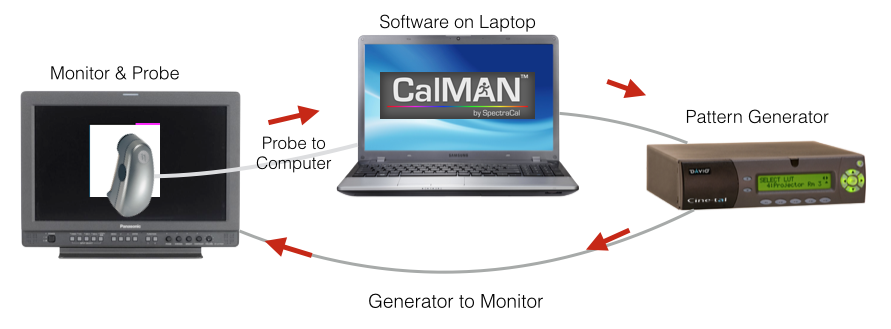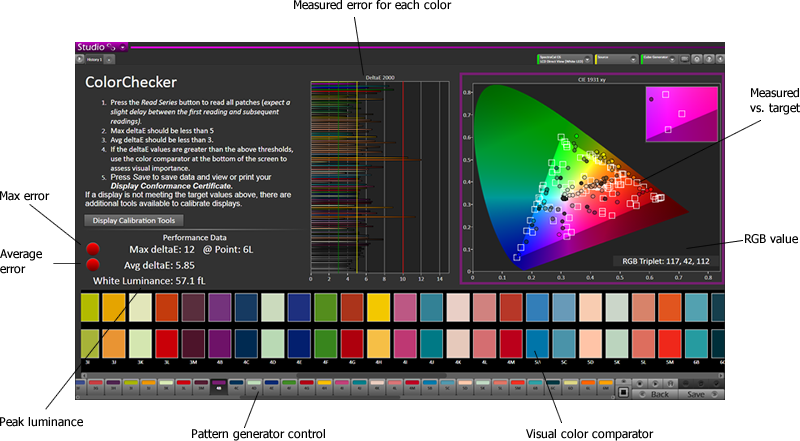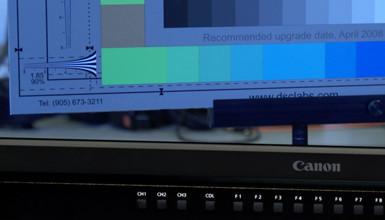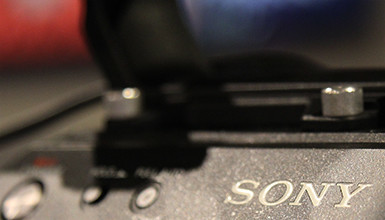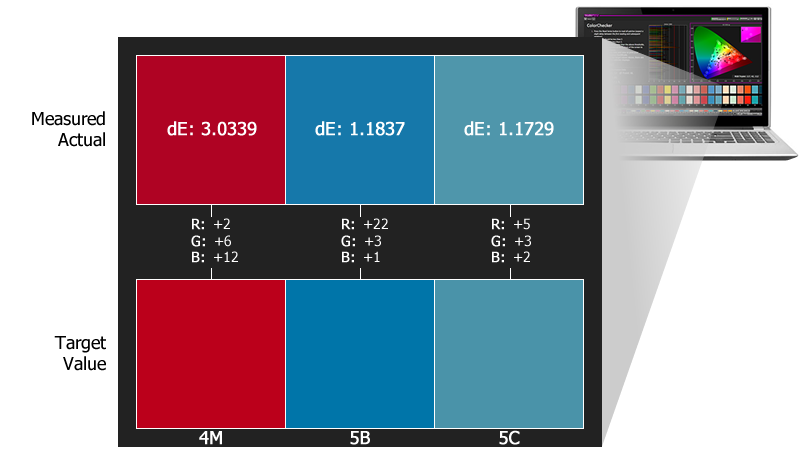
You can get a total view of your monitor's performance, including average grayscale/white balance error, peak white output, and measured versus target grayscale error, as well as specific color performance for more than 100 selected color values. ColorChecker is also helpful when comparing multiple monitors and trying to determine the differences in performance.
To use this software, you will need a probe and a pattern generator. However, SpectraCal has made sure their software works with a wide range of probes and test pattern generators, including some cost effective options. For a full list of supported hardware, check out SpectraCal's site.
ColorChecker makes running a test easy - after downloading the software, simply follow the instructions for connecting your color meter and test pattern source. The pattern generator feeds a pattern to the monitor, and then the probe reads the monitor's outputs. For an idea of how the system works, see the diagram below.
Now, make sure to choose the appropriate color space, and click the "Read Series" button to begin the test. You'll then see a screen like the one below, where each vertical line represents the amount of error in each color value compared to the target values. Below the red line is good, below the yellow line is even better, but below the green line is best. Keep in mind that any errors below the 3 delta E green line can generally not be perceived by the human eye.
To learn more about the process of monitor calibration, check out my latest Help Desk article on HDVideoPro, Beyond the Bars. Have you given ColorChecker a try? If you download it and you find out your monitors aren't as accurate as you think, AbelCine offers a number of Monitor Calibration Services to fit your needs!















